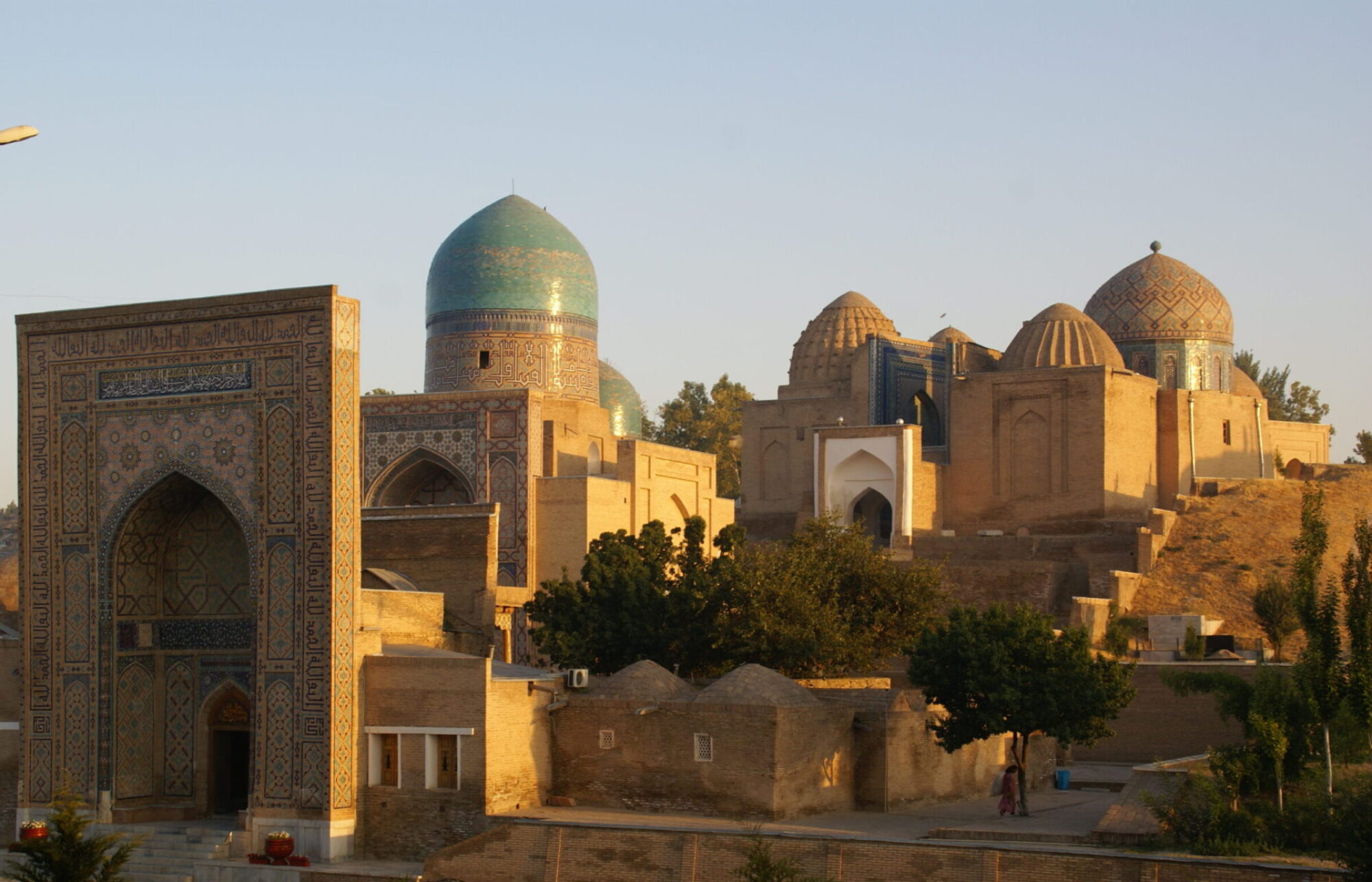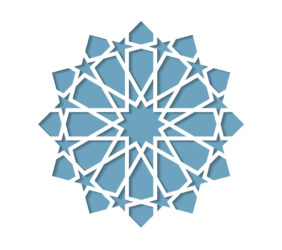By Jan van Belle and Gabrielle van den Berg
Tajik Badakhshan
Badakhshan is the name of the mountainous Pamir region in the east of Tajikistan, bordering on China and Afghanistan. In the south and west this region is bordered by the river Panj (or Oxus), which became the frontier between Russian and English territory after 1895. The Panj cuts the region of Badakhshan in two: Afghan and Tajik Badakhshan.
Badakhshan mainly consists of high mountains and fertile river valleys. The most important rivers are the Panj, the Shahdara, the Ghund, and the Bartang. Badakhshan is divided in several regions, of which Shughnan is the central one. The capital of Badakhshan is Kharagh (Khorog), which has 40,000 inhabitants. Badakhshan is inhabited by Pamir peoples, divided into different ethnic groups according to origin and language. They consider themselves a diverse unity. In the eastern part of Badakhshan, near the Chinese border, a totally different ethnic group is living: a small Kyrgyz community that has neither language, nor religion in common with the other Pamir peoples. The Sunnite Kirgiz live of yak-breeding on the plateau of Murghab, where conditions are very hard.
Religion
Badakhshan has been a place of refuge for religious minorities. The population of Badakhshan is mainly Isma’ili, one of the Shi’i sects in Islam. In their religious worship ‘Ali and his offspring play an important role. Their present leader is the 49th imam Haziru’l-waqt, the Aga Khan, Shah Karim al Husayni, who lives in Europe . The Ismailis of Badakhshan show a great reverence for the 11th century Nasir-i Khusrau, propagandist and poet. Because of their supposed heretic thoughts, the Isma’ilis have long been persecuted by other Muslims. The main characteristic of Isma’ilism is their belief in a continuous line of imams starting with the Prophets Muhammad and ‘Ali. In daily life the panj tan (five holy persons), that is the family and offspring of Muhammad (Muhammad himself, ‘Ali, Fatima, Hasan, and Husayn) take a central place. Every traditional house in Badakhshan has five pillars in the main room, each representing one of the holy persons.
To a large extent the music of the Pamir peoples is related to their traditional way of living and to religious thoughts. Especially madah (the performance of religious poetry) is an important way of expressing Ismaili religious thoughts.
Pamir Languages and Persian
The Autonomous Region of Badakhshan, as it has been called since the Soviet Republic of Tajikistan came into existence, has been shielded from the main historic events in Central Asia for centuries. This explains why languages and traditions are maintained till today. A wide variety of languages can be found in this relatively small region, which is inhabited by five hundred thousand people. The so-called Pamir languages belong to the group of Eastern Iranian languages. Since there were so many different languages in Badakhshan, a need existed for a lingua franca. Of old, Persian has been the common language in this region and the main language in some parts of Badakhshan, but in the last decades Russian has become important as well. For centuries however, Persian has been the main literary language, because the Pamir languages had no script. Therefore much of Badakhshi literature is written in Persian. Persian, or Tajik, as it is called since the foundation of Tajikistan , is the official language of Tajikistan since 1989. Speakers of the Pamir languages are now busy developing a convenient script.
Poetry
The poetry performed by the musicians of Badakhshan is far from uniform. The musicians use classical Persian poetry as well as relatively modern Isma’ili poetry and different kinds of folk poetry in the native language, which can be either one of the Pamir languages or a Badakhshan dialect of Tajik Persian. The musicians themselves tend to divide their poetry into three genres: madahkhani, ghazalkhani, and folk poetry.
Madahkhani
Madahkhani (singing of praise) consists of all kinds of religious poetry, mostly written in Persian. Madah (praise) is usually performed at solemn occasions, for example at a funeral ceremony, but also as a kind of religious practice on Thursday and Friday evenings, or on Friday and Saturday evenings. The religious poetry in madahkhani can either be classical Persian mystic poetry or modern Isma’ili poetry. The classical mystic poetry is often attributed to Jalal al-Din Rumi, a famous medieval Persian poet, who was born in Balkh (nowadays in Afghanistan ) but had to flee to Konya (nowadays in Turkey) for the Mongol invasion. Like most of the Persian poets, he is considered an Isma’ili poet by the inhabitants of Badakhshan. The relatively modern poetry in madahkhani is from local Isma’ili poets from the 19th and 20th century. In this poetry the teachings of Ismã’ ilism are more explicitly expressed.
Ghazalkhani
Ghazalkhani is the performance of ghazals, an important genre in classical Persian poetry. A ghazal is a poem usually consisting of a maximum of 15 lines. A bayt (line) consist of two misrã’s (half lines). A ghazal has strict rhyme and metre, like most classical Persian poetry. A ghazal traditionally deals with love, worldly as well as transcendental. Ghazalkhani is not exclusively related to religion. The most famous ghazal poet of the classical Persian tradition was Hafiz, who lived in Shiraz in the 14th century. His ghazals are widely performed in the whole Iranian world. Ghazals in Badakhshan are performed at different occasions, for example at weddings, and solemn occasions. Some ghazals, although explicitly classified by musicians as belonging to the genre of ghazalkhani do not seem to be any different from the ghazals performed under madahkhani.
folk poetry – Dargilik
The third genre, as distinguished by the Badakhshhi musicians, is folk poetry. Different forms are to be distinguished. The most important one is dargilik-falak-lala‘ik , a typical Badakhshan type of songs. The musical characteristics of dargilik (song of separation), falak (song of fate) lala‘ik (lullaby) are not easy to distinguish. Especially dargilik and lala ‘ik in many respects are similar. But as far as the contents are concerned, a distinction between these three forms—of an otherwise highly coherent genre—can be made. In dargilik usually the separation of the beloved or a relative is described, of course by mentioning the vicissitudes of life as well. This forms the transition of dargilik to falak, which is the more philosophic treatment of separation. In falak , the singer utters his helplessness in this world which is ruled only by fate. Lala‘ik is characterized by the frequent occurrence of lai-lai sounds, and can be compared to a lullaby. However it is always sad and slightly philosophical.
Dargilik – falak – lala‘ik is often written in the native language, and sung by female singers. Each of the different regions of Badakhshan has its own special variety of the dargilik – falak – lala’ik genre: in the Rushan region, dargilik and lala’ik are sometimes called duwduwak (duw duw is a sound like lai lai and is frequently used), while in Wakhan this genre is often called bulbulik which can allude to falak as well in this case. Bulbulik is the Wakhi variant of dargilik , in which the separation of a beloved or a relative is lamented. Bulbulik literally means nightingale song: in classical Persian poetry, the nightingale is the symbol of the lover, who is singing a lament over his beloved.
There also exists a wide range of folk songs—both in native language and in Tajik—that are more difficult to classify. Many of these are performed at weddings, like “Shah-i ma khush amadi ” in which the bride groom is welcomed in the house of the bride.
In 1992-1993 recordings have been made from a selection of the poetry and music in the Pamir mountains. In a society that is increasingly adopting modern technology and culture, these tapes are a monument to a longstanding tradition of which the future remains unclear. The tape numbers that you will find on this website refer to the DAT tapes as recorded in Badakhshan. Copies of these tapes in MP3 format are stored at DANS datacenter in the Netherlands.



